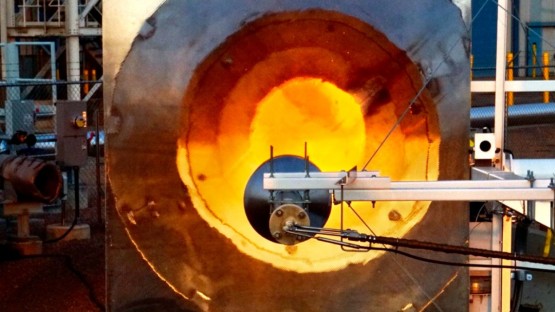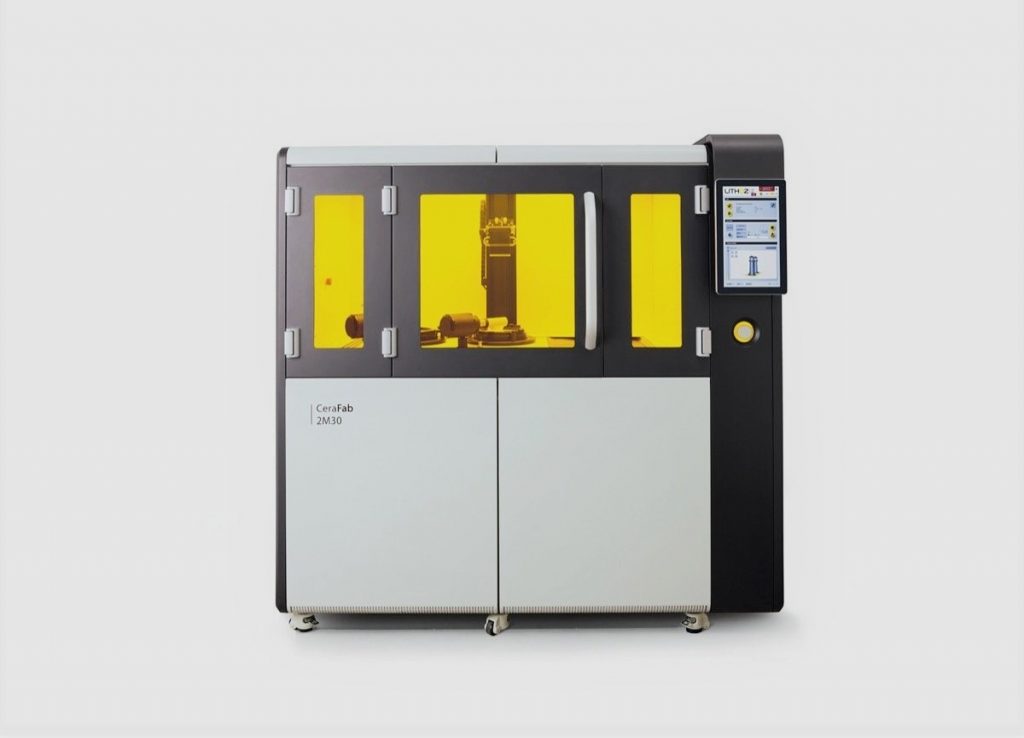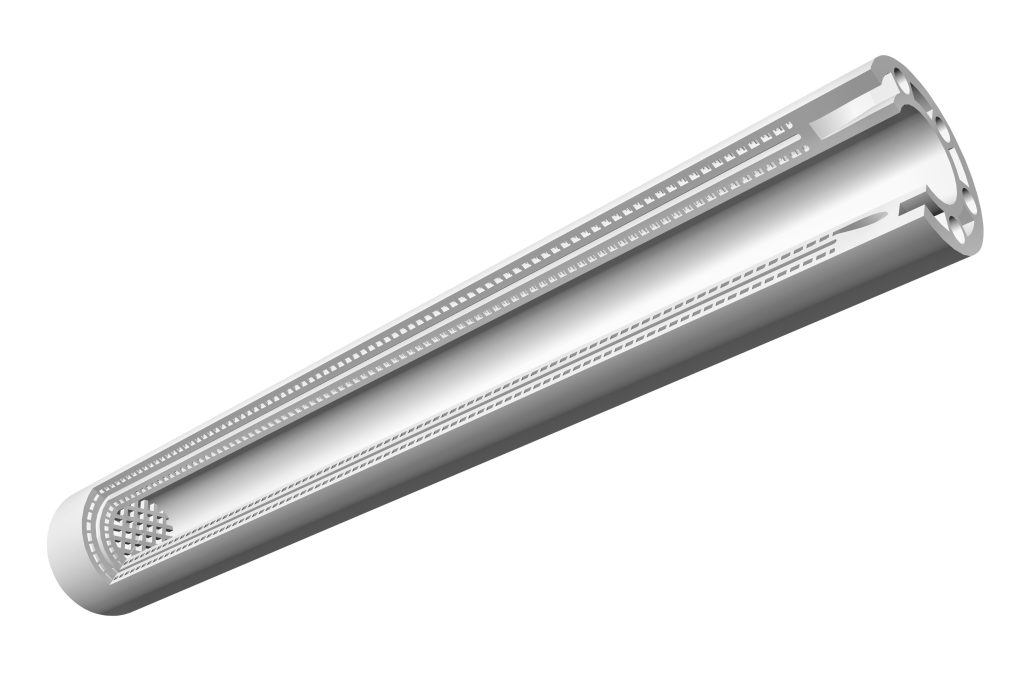Cornell University, alongside its start-up Dimensional Energy and Lithoz, has been awarded a grant to develop novel ceramics that could be used to 3D print parts of clean energy reactors.
Having raised $50,000 in funding, researchers at the firms are now aiming to come up with a new type of ceramic that’s better able to withstand the high temperatures of thermocatalytic reactors in operation. Using computer modeling and 3D printing, the team say it could be possible to layer the resulting material into structures, shaped specifically to improve both resilience and reactor CO2 conversion rates.
“Excellent thermal properties and corrosion resistance make ceramics attractive for these reactors, but significant design constraints limit their actual performance,” said Sadaf Sobhani, the Cornell University Assistant Professor leading the program. “The freedom of design and choice of materials enabled by ceramic additive manufacturing will narrow the theory-performance gap to hit desired milestones.”

Lithoz’s LCM 3D printing technology
Cornell University researchers have worked with Lithoz for at least two years on initiatives to improve the performance of thermocatalytic reactor parts, a partner with an extensive background in ceramic 3D printing. Initially developed at the Vienna University of Technology in 2006, Lithoz’s LCM 3D printing technology enables the production of complex ceramic structures, at an ultra-high resolution.
In practice, the process involves polymerizing a photocurable material dispersed with ceramic particles layer-by-layer into desired shapes, before sintering these to form solid ceramic parts. According to Lithoz, its approach enables the production of components that “meet or exceed the mechanical performance and reproducibility” of those made via traditional ceramic manufacturing methods.
To commercialize its technology, the firm has integrated it into several machines, including the CeraFab Multi 2M30 3D printer, which features multi-material additive manufacturing capabilities. In facilitating the production of ceramic-metal, ceramic-polymer and ceramic-ceramic combinations, the system allows for the creation of functionally-graded parts, with a mixture of mechanical properties.
More recently, Lithoz has launched the CeraFab Lab L30, a budget-friendly LCM 3D printer, as well as the all-new CeraMax Vario V900, built for the production of large objects up to 250 x 250 x 290mm in size, with thick walls and full densities.
Over the years, the company has also sought to come up with new ceramic materials, as a means of extending the applications of its technologies. Back in 2019, for instance, Lithoz developed a 3D printing glass ceramic alongside Corning, which was heralded as a breakthrough at the time for creation of tough, biocompatible superconductors.

A Cornell-led green energy initiative
Awarded by FuzeHub, a non-profit founded to boost the growth of New York-based businesses, the $50,000 funding has effectively been awarded to aid the operations of Dimensional Energy. The Cornell University-run firm uses energy reactors to convert carbon dioxide into chemicals that can later be processed into clean aviation fuel.
While Dimensional Energy gained the backing of United Airlines in June, with the company providing funding and committing to buying 300 million gallons of fuel, the start-up relies on thermocatalytic technology, which can be tricky to scale.
Such specialized reactors effectively work by converting captured CO2, but as Cornell University itself says, splitting the gas’ “notoriously strong molecular bonds” is “no easy task.” To optimize the process, a Cornell-led research group has therefore begun working with industry partners to come up with 3D printable ceramics, which could be able to break apart carbon emissions more efficiently.
Building on the findings of prior research, which saw the team work with Lithoz America to develop a computational modeling and 3D printing-based approach, they now aim to create performance-optimized reactor parts. In doing so, FuzeHub Executive Director Elena Garuc believes the researchers will be giving a boost to the US economy, by providing better access to an on-shore clean energy source.
“Stronger domestic production supports a more resilient economy,” explained Garuc. “During this round of manufacturing grants, many of the projects that were selected involved advanced materials. As awardees work to solve technical challenges, they’re also supporting the onshoring of production, which is crucial for supply chain resiliency, especially in these post-pandemic times.”

Ceramic 3D printing in practice
Despite the fragility traditionally associated with ceramics, researchers and manufacturers are increasingly finding ways of getting around this to 3D print the material into parts with aerospace, energy and even radar applications.
In May 2022, the French Space Agency announced that it was investigating the use of 3D printing in space subsystem optimization. Specifically, the agency revealed that it was looking into the potential of how 3D printed oxide ceramic materials could be used to improve the design of crucial subsystems for space propulsion.
Somewhat similarly to Dimensional Energy, Bosch Advanced Ceramics, together with chemicals firm BASF and the Karlsruhe Institute of Technology, have used the material to build the world’s first 3D printed ceramic microreactor. Unveiled in July 2022, the device is designed to house and facilitate chemical reactions, in addition to withstanding the often extreme conditions created during the process.
Late last year, CeramTec also revealed that it was seeing rising demand for 3D printed piezoelectric sonar parts with underwater applications. The firm manufactures customized PZT components for both passive and active systems with acoustic sonar use cases, focusing particularly on hemisphere, disc, block and tube production.
To stay up to date with the latest 3D printing news, don’t forget to subscribe to the 3D Printing Industry newsletter or follow us on Twitter or liking our page on Facebook.
While you’re here, why not subscribe to our Youtube channel? featuring discussion, debriefs, video shorts and webinar replays.
Are you looking for a job in the additive manufacturing industry? Visit 3D Printing Jobs for a selection of roles in the industry.
Featured image shows Dimensional Energy testing a reactor at Cornell McGovern Center. Photo via Cornell University.



